Q
how to remove honda civic door panel
To remove the door panel on a Honda Civic, start by gathering tools like a plastic trim pry tool and a Phillips-head screwdriver. Begin at the bottom of the door and gently pry up to release the retaining clips—take it easy here, as too much force can crack the panel or break the clips. Next, you’ll need to remove the screws around the door handle and switch panel; these are usually hidden behind small trim covers, so carefully pop those off with your pry tool to access the screws. Once the screws are out, slowly lift the entire panel upward to disengage the mounting hooks at the top. Finally, disconnect any wiring harnesses for the power window switches and you’re done.
In Malaysia’s hot, humid climate, those plastic clips tend to get brittle over time, so extra caution is key. A light spritz of lubricant can help reduce the risk of breaking them if they’re stuck. While you’re at it, it’s a good idea to regularly check the door weatherstripping and drain holes—clogged drains or worn seals can let water seep in, leading to electrical issues or moldy interior parts down the line. If you’re not super confident with the process, Honda’s official service manual or a quick chat with a pro mechanic is always a smart move to avoid damaging the door’s internal components.
Special Disclaimer: This content is published by users and does not represent the views or position of PCauto.
Related Q&A
Q
How much does it cost to replace a timing belt on a 2018 Honda Civic?
The cost to replace the timing belt on a 2018 Honda Civic typically ranges from RM800 to RM1500. The exact price depends on the type of repair shop, whether original or aftermarket parts are used, and if components like the water pump are replaced at the same time. A genuine belt kit plus a water pump can push the total cost close to RM2000. As a critical engine component, the timing belt should be replaced every 60,000 to 100,000 kilometers or around 5 years. A broken belt can cause catastrophic damage from valve-piston collisions. Beyond the belt itself, professional technicians usually recommend replacing the tensioner and idler pulleys together for system stability. Note that some models use a timing chain design which doesn’t require regular replacement. When choosing a repair shop, verify they use legitimate parts and have Honda-specific experience—improper installation shortens belt life. Regularly checking for cracks or wear on the belt also helps prevent sudden failures.
Q
Is the 2018 Civic a safe car?
The 2018 Honda Civic shines when it comes to safety, packing in a solid lineup of active and passive safety tech. You've got your standard stuff like Vehicle Stability Control, Anti-lock Braking System, multiple airbags, and a rigid body structure—all working together to keep occupants protected when crash tests put it to the test. Step up to the higher trims, and you'll get Honda SENSING, which adds some pretty advanced features: adaptive cruise control, lane keeping assist, and collision mitigation braking, just to name a few. These definitely give peace of mind on the road. Behind the wheel, the Civic feels steady and the brakes are reliable too, making it a solid choice for everyday driving. If you're looking to dig deeper into car safety, checking out crash test ratings is a good move—think ASEAN NCAP or Global NCAP scores. They give you a better overall picture of how a car holds up. And don't forget, regular maintenance—keeping an eye on tires, brakes, and other key parts—is just as crucial for staying safe out there.
Q
How is the 2018 Civic's ride quality?
The 2018 Civic delivers well-balanced ride comfort in its class. The suspension tuning leans sporty but still works for daily use – the front MacPherson strut and rear multi-link setup does a solid job filtering out small road vibrations. That said, rear passengers will feel noticeable jolts when going over speed bumps or rough roads, which ties back to its stiffer spring rates.
On the NVH front, tire noise gets a bit pronounced at highway speeds, but engine insulation is nicely done. The 1.5T turbo engine stays at low revs during cruising, keeping things calm. The seats have just the right amount of padding – supportive enough for long drives without feeling too firm. Steering feel is sharp with good road feedback, not overly sensitive.
Notably, this generation Civic has 25% stiffer body rigidity than the previous model, resulting in more stable cornering posture. This design boosts handling while also indirectly improving ride stability during quick lane changes. If comfort is a higher priority, go for the factory 17-inch wheel option – it offers better shock absorption compared to the 18-inch version. And don’t forget to regularly check tire pressure and suspension bushing condition; both have a big impact on overall ride quality.
Q
Is a used 2018 Civic a smart buy now?
The 2018 Honda Civic is a solid value pick as a used car right now. It strikes a good balance between power, space, and fuel economy. The 1.5T turbo engine delivers plenty of pep while keeping gas mileage reasonable, making it good for both daily commutes and longer drives. The interior is roomy, especially the rear legroom which beats out many competitors, and the trunk space is enough for family use too.
In terms of reliability, it has a pretty low failure rate, routine maintenance costs are reasonable, and parts are easy to come by at decent prices. But keep an eye out for the oil dilution issue that some early batches had—definitely check the service records or get a professional inspection.
Used prices have stabilized now, offering a nice discount compared to buying new, but when you buy, pay attention to mileage, accident history, and maintenance upkeep. I’d recommend looking for a car still under the original factory warranty or consider purchasing an extended warranty.
The Civic has a big local presence, so it’s relatively easy to resell when you’re ready, and its resale value is above average for the class. You could also check out the same-year Toyota Corolla or Mazda3, but the Civic has the edge when it comes to driving fun and interior space, making it a great fit for buyers who want practicality with a bit of driving enjoyment.
Q
What should I pay for a 2018 Honda Civic?
The used car prices for the 2018 Honda Civic typically range from RM60,000 to RM90,000, depending on factors like vehicle condition, mileage, trim level, and maintenance records. The 1.8L S trim is relatively more affordable, while the top-spec 1.5L Turbo RS is closer to the upper end of that range. It's advisable to check specific quotes through used car platforms or dealerships before buying, and also pay attention to inspecting for accident history or regular maintenance certificates. As a popular model, the Civic holds its value well and has a solid reliability record, especially the 1.5T turbo engine which strikes a good balance between power and fuel efficiency, making it suitable for daily driving. If you're on a tighter budget, you could consider competitors of similar age, but be sure to compare configurations and after-sales support. Additionally, if financing the purchase, it's recommended to compare interest rate plans from different banks to reduce long-term ownership costs.
Q
What is the AC problem in the Honda Civic 2018?
The 2018 Honda Civic has air conditioning issues mainly centered around inconsistent cooling performance or reduced airflow, which are usually related to condenser leaks, low refrigerant levels, or compressor failures. Some owners have reported that the AC efficiency drops significantly in hot weather. If you encounter such problems, it's advisable to first check the refrigerant pressure and inspect the condenser for damage. Regularly replacing the cabin air filter in daily use can effectively maintain air circulation efficiency, while avoiding prolonged use of the recirculation mode to prevent overloading the system. It's important to note that the AC system performance of all vehicles will naturally degrade over time, so regular maintenance is key—like checking the refrigerant condition every two years and cleaning dust and debris from the condenser fins to improve heat dissipation. If you experience intermittent cooling failures, it might be due to a clogged expansion valve or poor electrical connections, which require diagnosis by a professional technician using pressure gauges. Additionally, using a sunshade when parking in summer to reduce interior heat buildup can significantly lower the load on the AC when starting up.
Q
What engine is in a 2018 Civic?
The 2018 Honda Civic offers a range of engine options depending on the market. The most common is the 1.5-liter turbocharged four-cylinder (code-named L15B7), which features VTEC technology. It puts out around 174 horsepower and 220 Nm of peak torque, mated to either a CVT or a 6-speed manual transmission. It delivers a balanced performance with excellent fuel economy, making it perfect for daily driving. Additionally, some regions get a 2.0-liter naturally aspirated four-cylinder (code-named K20C2) with 158 horsepower and 187 Nm of torque. While it's a bit less powerful than the turbo version, it's simpler in structure and has lower maintenance costs. It's worth noting that the 2018 Civic Type R comes with a high-performance 2.0-liter turbo engine (code-named K20C1), though that's a special edition model. For most buyers, the 1.5T engine is the more mainstream pick. It provides plenty of torque at low revs, and Honda's Earth Dreams technology ensures good fuel efficiency, traits that help it stand out in its class.
Q
How many miles can a 2018 Civic last?
The 2018 Honda Civic can typically last between 200,000 to 300,000 miles (about 320,000 to 480,000 kilometers) with regular maintenance and proper use. Its actual lifespan depends on factors like driving habits, maintenance frequency, and road conditions. The car's 1.5T turbocharged engine or 2.0L naturally aspirated engine are known for reliability, paired with either a CVT transmission or 6-speed manual, making the powertrain quite durable. Regularly changing key fluids like engine oil, transmission fluid, and brake fluid, along with timely inspections of tires, brake pads, and suspension components, can significantly extend the vehicle's life. It's worth noting that the Civic holds its value well and performs strong in the used car market, which is another indicator of its long-term dependability. If you frequently drive in congested cities or use it for short trips, consider shortening maintenance intervals to reduce carbon buildup and mechanical wear. Additionally, the hot and humid climate in Southeast Asia can affect rubber parts and electronic components, so regular checks on these items can help prevent potential issues. Overall, with proper care, this car is more than capable of accompanying you for over 10 years or even longer.
Q
What is the gas mileage on a 2018 Honda Civic?
The fuel efficiency of the 2018 Honda Civic varies depending on the powertrain configuration. The version equipped with a 1.8-liter naturally aspirated engine has a combined fuel consumption of approximately 6.5 liters per 100 kilometers, while the 1.5-liter turbocharged model is more efficient, with a combined fuel consumption of around 5.8 liters per 100 kilometers. Actual fuel consumption may vary slightly based on driving habits, road conditions, and maintenance status. Thanks to the optimized pairing of the Earth Dreams technology engine and CVT transmission, this car strikes a good balance between fuel economy and power response, making it suitable for daily commuting and long-distance driving. To further improve fuel efficiency, it is recommended to regularly maintain the air filter and tires, avoid sudden acceleration or speeding, and keep an eye on whether tire pressure is at the recommended level. Among models in its class, the Civic's fuel efficiency is above average, balancing practicality and economy, making it a solid choice for consumers who value vehicle operating costs.
Q
What is the trade-in value of a 2018 Honda Civic?
The used car valuation for a 2018 Honda Civic typically ranges from RM70,000 to RM90,000, with the exact price depending on factors like vehicle condition, mileage, trim level, and service history. The 1.8L S trim, being the base model, usually sits at the lower end, while the top-spec 1.5L Turbo RS can get close to the upper limit. There are a few key points to consider when valuing a used Civic. First is mileage – ideally around 15,000 km per year; anything over 20,000 km annually might impact the price. Second is service records – a complete dealer service history can boost residual value by about 5% to 8%. On the flip side, accident-damaged or flood-affected cars will take a huge hit, depreciating by 30% to 50%. It’s a good idea to get a free appraisal from an authorized Honda dealer before selling and also compare quotes from multiple used car dealers. With the recent increase in used car supply, there might be more room for negotiation. If you’re thinking about trading it in for a new car, some dealers offer trade-in bonuses that could be better than selling directly, but make sure to check if the new car discount and old car valuation balance out. Understanding these factors will help you get a fairer price in the transaction, and it’s also recommended to get a vehicle inspection report from a third-party service to build buyer confidence.
Popular Cars
Model Year
Car Compare
Car Photo
Latest Q&A
Q
What is more important, torque or kW in a car?
The translation is accurate and does not require any adjustments.
Q
Which torque is better for a car?
The quality of a car's torque is not determined by a single numerical value; it needs to be judged in combination with usage scenarios and engine characteristics. For daily urban driving, engines that can deliver peak torque at low rpm are more advantageous. For example, a 1.5-liter turbocharged engine can achieve a peak torque of 255 Nm at 1500 rpm. This characteristic enables the vehicle to deliver prompt power response during起步 and low-speed driving, eliminating the need for frequent gear shifts and enhancing driving convenience and fuel efficiency. If you prefer the linear power delivery of naturally aspirated engines, even if the peak torque occurs at higher rpm (e.g., a 1.5-liter naturally aspirated engine produces 148 Nm at 4000 rpm), pairing it with a quick-shifting transmission can still deliver smooth acceleration. For performance-oriented users, higher torque values (e.g., up to 320 Nm after modifications) can significantly improve the vehicle's acceleration, reducing the 0-100 km/h time from the factory 9.5-10 seconds to 7.46 seconds. Additionally, the actual torque performance is closely tied to transmission matching; a compact and quick-shifting transmission can more effectively transfer engine torque and optimize power delivery efficiency. In conclusion, selecting the appropriate torque depends on individual driving needs: prioritize turbocharged engines with high low-rpm torque for daily commuting; opt for well-matched naturally aspirated engines if linear power delivery is preferred; and performance enthusiasts may consider higher-torque engines or reasonable upgrade modifications.
Q
How does torque affect car acceleration?
Torque is the rotational force output by an engine, which directly determines the traction force of a car and thus affects its acceleration performance. The greater the torque, the more rapid the acceleration when the vehicle starts and travels at low speeds, because at low engine speeds, there is sufficient time for fuel injection and air intake, resulting in greater combustion pressure, higher torque, and the ability to quickly overcome driving resistance. With fixed power, torque is inversely proportional to rotational speed, so reasonable control of the speed range can optimize acceleration—for example, turbocharged engines typically deliver peak torque at 1500-2000 rpm, covering the commonly used speed range in daily driving and providing a more linear acceleration response; downshifting when overtaking or climbing hills increases the rotational speed while amplifying torque, thereby achieving stronger instantaneous acceleration. The torque characteristics of different engines also influence acceleration performance: diesel engines and turbocharged engines, due to their higher compression ratios, generate greater torque and stronger traction during acceleration. Furthermore, the rotational speed range of torque output (torque plateau) is more critical than the maximum torque value—models with a broad torque plateau continuously deliver high torque within the commonly used speed range, enabling smooth acceleration without frequent gear shifts. Additionally, factors such as transmission efficiency and vehicle weight indirectly affect how torque is converted into acceleration force, but torque remains one of the core power metrics determining acceleration performance.
Q
What are the benefits of low end torque?
The core advantage of low-end torque lies in the engine's ability to deliver sufficient rotational force at lower RPM ranges, bringing multiple benefits. First, in terms of fuel economy, the required power can be obtained without revving the engine high, effectively reducing fuel consumption and exhaust emissions, which meets energy-saving needs. Second, regarding driving convenience, the power response is rapid during start-up, climbing hills, or overtaking at medium and low speeds, making it particularly suitable for congested urban road conditions and ensuring smoother vehicle operation. Mechanically, low-speed operation reduces the load on the engine and transmission system, minimizes wear and tear, extends component lifespan, and enhances the reliability of the overall powertrain. In terms of ride comfort, lower vibration and noise at low RPMs improve the driving and riding experience. Additionally, it has strong adaptability: it can maintain high fuel efficiency on urban roads and provide stable power support on highways. Properly tuned low-end torque output (such as within the "golden torque range") can balance power performance and fuel efficiency, making it an ideal choice for daily commuting and economy models, while also contributing to energy conservation, emission reduction, and sustainable development.
Q
Does higher torque mean faster?
The relationship between torque and vehicle speed is not simply "the greater the torque, the faster the vehicle". Torque is the rotational force output by the engine, which directly determines the traction force of the vehicle. A larger torque means stronger power when the vehicle starts, climbs hills or tows heavy loads, and more brisk low-speed acceleration performance; however, the actual acceleration speed and maximum speed of the vehicle are also affected by various factors such as power, rotational speed, vehicle weight, transmission system efficiency and tire grip. According to the power formula (Power = Torque × Rotational Speed ÷ 9550), when power is fixed, torque and rotational speed are inversely proportional: torque is larger at low rotational speeds, which is suitable for starting or complex road conditions; torque is relatively smaller at high rotational speeds, but it can maintain high-speed cruising. For example, turbocharged engines usually have the characteristic of high torque at low rotational speeds (such as reaching peak torque at around 1500rpm), making starting brisk during urban commuting; while naturally aspirated engines are mostly high torque at high rotational speeds, with more powerful acceleration in the middle and later stages. When choosing a car, in addition to the maximum torque value, the rotational speed range of torque output (torque platform) is more critical. Models with a wide platform (such as continuous output of maximum torque at 1500-4500rpm) have power covering the commonly used rotational speeds in daily use, making driving smoother.
View MoreRelated News
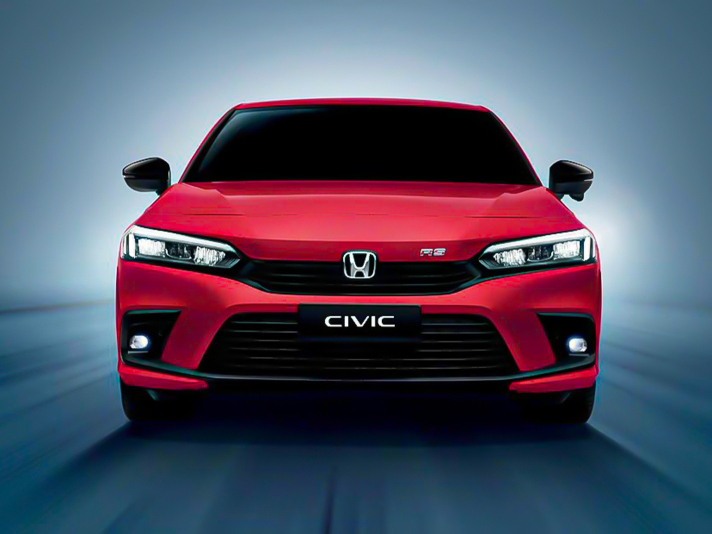
Honda Civic Interior Revealed: A Comprehensive Analysis of Civic’s Interior Charm
Kevin WongJul 10, 2025
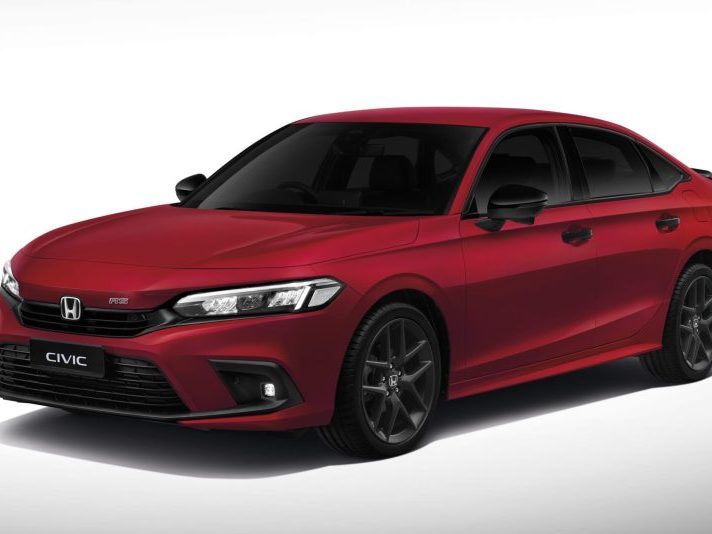
Honda Civic Price Revealed: The Most Detailed Buying Guide!
AshleyApr 8, 2025
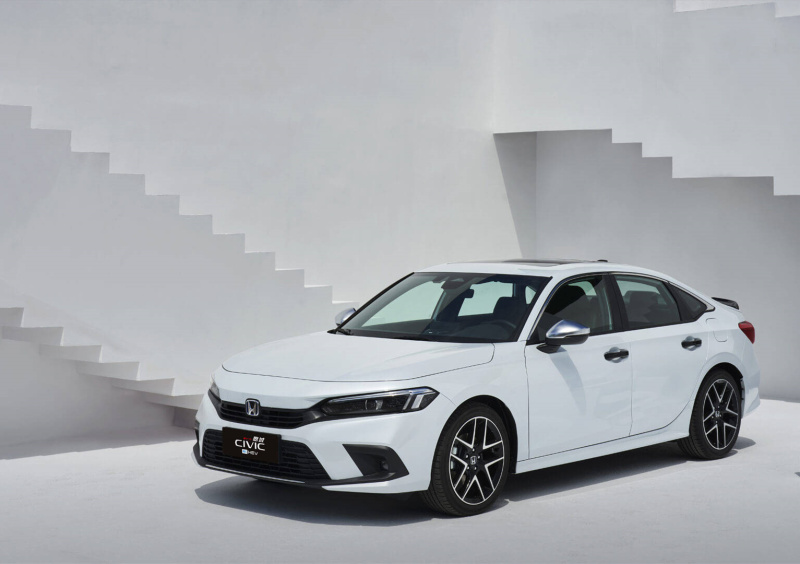
Whether it's about appearance or handling, why do young people all like Honda Civic?
WilliamSep 24, 2024
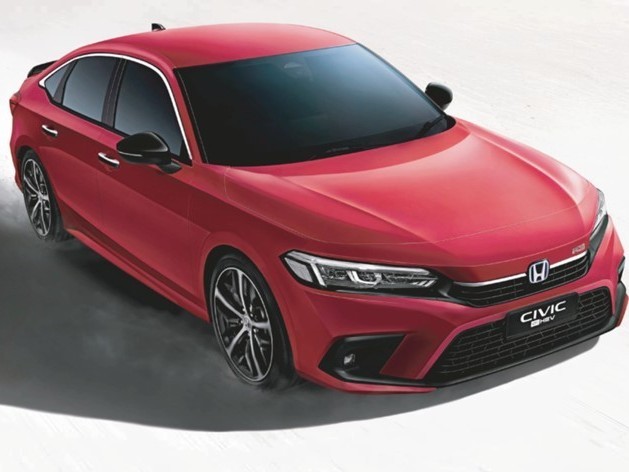
2022 Honda Civic: Hybrid car with the fastest acceleration, lowest fuel consumption, who says eco-friendly cannot be fast
JohnSep 3, 2024
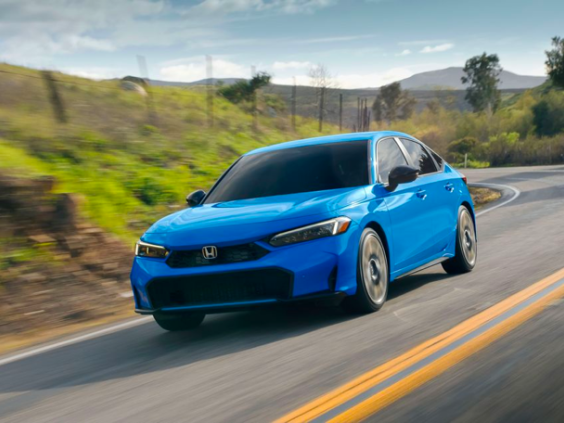
2025 Honda Civic debuts, minor changes in appearance, has 1.5 Turbo model been discontinued?
LienMay 22, 2024
View More





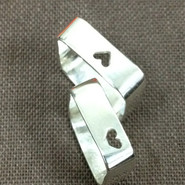






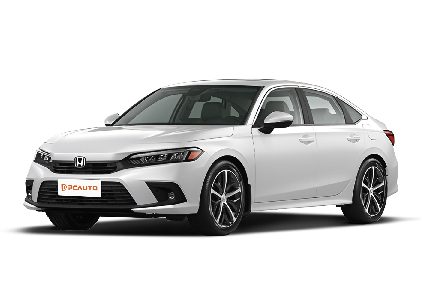
 Cars
Cars




Pros
Cons